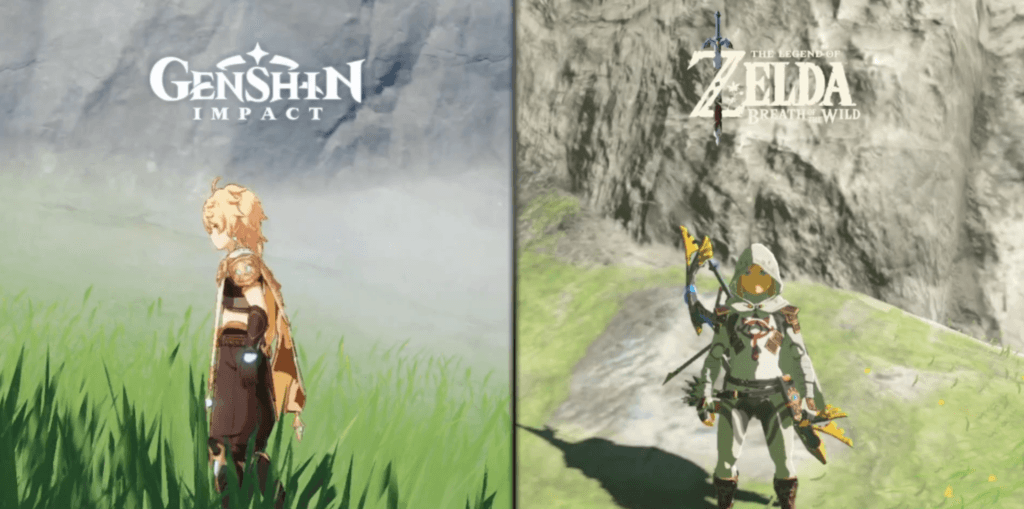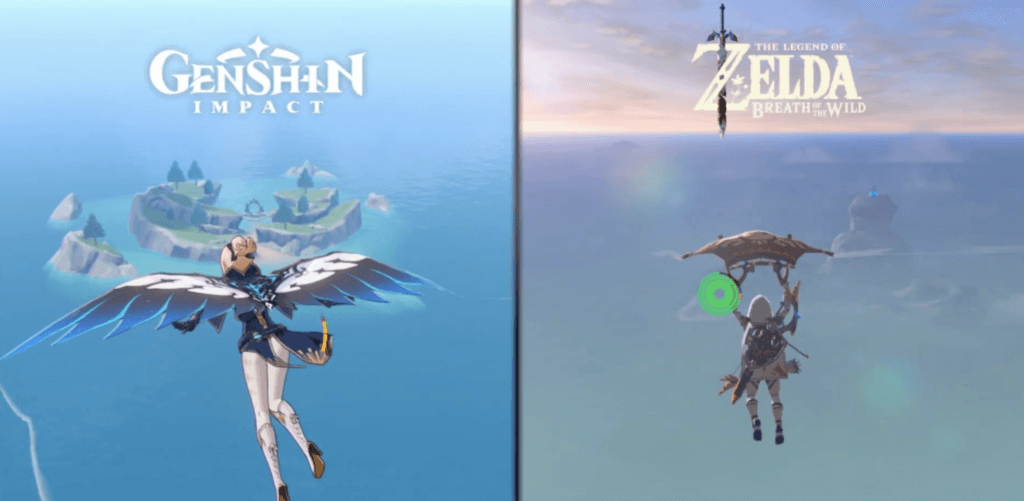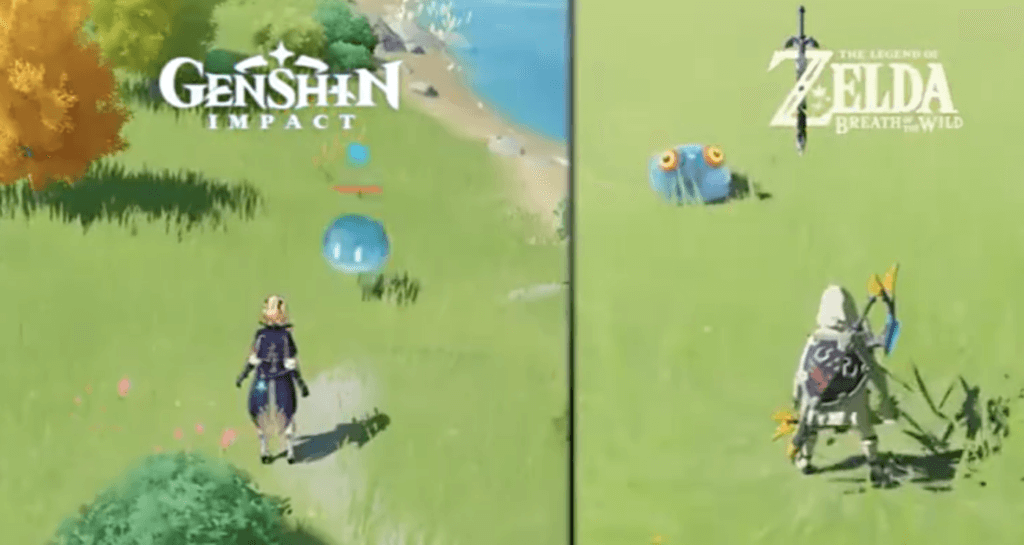Written by Sifan, 2021 Cohort
Recently, because of the increasing chances of seeing “Genshin Impact” related content on social media and my curiosity about miHoYo as a game company, I downloaded and started playing Genshin. As a player of The Legend of Zelda: Breath of the Wild, I’d like to discuss my view of whether Genshin plagiarised Zalda.
Genshin Impact is an open-world action role-playing game with a fantasy theme developed by miHoYo, a Chinese game company. The game currently supports Android and iOS systems, and PC, PS4 and PS5 platforms. It is even planned for release on the Nintendo Switch, just the same as Zalde. Genshin has been called the “a new hope of Chinese games” by a small group of fans because of its extraordinary performance in overseas markets. According to the data, Genshin’s total revenue from overseas markets exceeded $200 million in January last year. Its open-world gameplay, beautiful artwork, and characters exceeded most players’ expectations for mobile games. But at the same time, some of the game’s graphics, mechanics, character movements, and monster designs reminded many players of the masterpiece—The Legend of Zelda: Breath of the Wild. Both of them have an open-world setting, gliders, climbing, swimming, fire lawn, updraft, and other game elements. These cause many players to have a strong sense of deja vu.


However, is it plagiarism or not? Before answering this question, we need to know how the law identifies game copyright infringement. We need to think about two points. First, whether the plagiarist knows they plagiarized or not. Second, whether the two works have a substantial similarities or not. The first condition has been met because Genshin has officially affirmed that they took Zelda as a reference.
What about substantial similarity? In determining whether there is substantial similarity, we have to think about the two works in two dimensions: thinking and expression. Copyright does not protect abstract game ideas, topics, or rules; it only protects the concrete expressions that go with them. For example, a game mode of Battle Royale (this is thinking)’s concrete expression can be “Player Unknown’s Battlegrounds” in a realistic style or “Fall Guys” in a cute style. Even “PUBG” and “Call of Duty: Warzone” have similar realistic styles. The game mechanics and artwork of the two are different, so they do not constitute infringement.
In judicial practice, there are three dimensions to determining the substantial similarity of a game.
1. Programming code plagiarizing
This point is impossible for Genshin to meet because the game platform is different.
2. Art assets/UX design/game text (plot, gameplay instructions) and other content-external expressions.
Despite the strong sense of deja vu, the two art styles are not totally the same. The UI design makes a huge difference. Same with the game text. Their story settings are entirely different.


3. The gameplay’s specific presentation
Although both are open-world, Genshin is not a real open-world like Zelda. Zelda can go straight from the beginning of the game to the final boss and start the boss battle. But many of Genshin’s battles require a specific level to be reached before you can pass. In addition, the incredible gameplay for me is that Genshin can control four characters at once, and there are dozens of characters for you to pick and team up with. We all know that players can only control Link in Zelda. And some other contentions, such as players can fly in the game, they all have slime, etc. That all belongs to the “thinking” category, or many games also have the mechanics.


Therefore, my conclusion is that Genshin is not plagiarized. From the view of copyright law, it is not considered plagiarism. Personally, I liked the game better after playing it. Genshin is a cross between Legend of Zelda: Breath of the Wild and Dragon Nest. And it has a lot of new game mechanics to learn. As a learning reference, it may be worth a try.